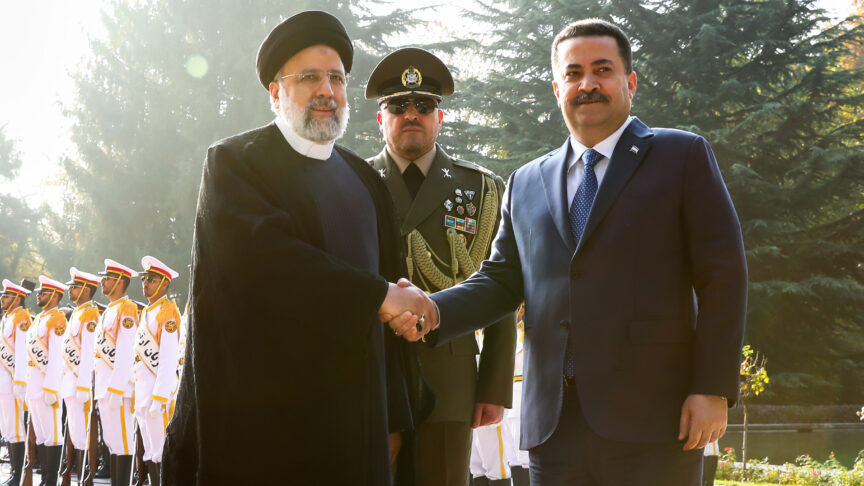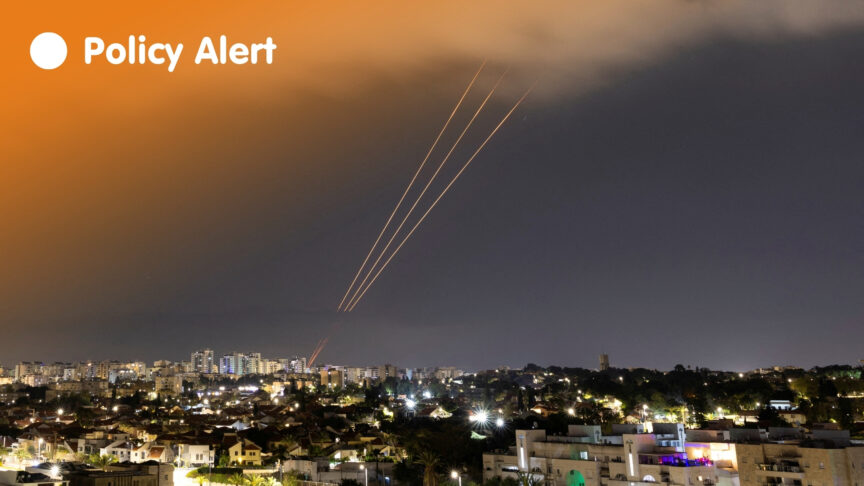The death of a jihadist: A chance to curb Mali’s conflict
Last month, French forces in Mali killed one of the Sahel’s most prominent jihadist leaders, Amadou Koufa – his death is a brief opportunity for Mali’s government and the international community
On the night of 22-23 November, French forces operating in Mali’s Mopti region reportedly killed one of the Sahel’s most prominent jihadist leaders, Amadou Koufa. He was a key figure in the growing violence and instability in central Mali that killed at least 500 people between January and August this year. Koufa was also a founding member of the Group for the Support of Islam and Muslims (JNIM), whose attacks preoccupy France’s Operation Barkhane, as well as UN and other international operations in Mali. The raid, which involved a broad cross section of French military assets, reportedly killed not just Koufa but also at least 30 other combatants – although al-Qaeda in the Islamic Maghreb (AQIM) leader Abdelmalek Droukdel has strongly denied the reports. (Working alongside Koufa’s Katibat Macina, AQIM forms the largest part of JNIM.)
The targeted killing of jihadist leaders such as Koufa could create breathing space for Malian and UN forces
French Minister of the Armed Forces Florence Parly announced the raid and Koufa’s “likely” death on 23 November, saying “this new success for French military engagement in the Sahel shows our will to fight terrorism without respite. It also demonstrates our resolve in helping Malian authorities in their daily fight to stabilise and pacify the country.” The assault came less than two weeks after French forces conducted a raid on a high-value target near Mali’s border with Burkina Faso, killing jihadist commander Almansour Ag Alkassoum. These missions form part expanding international efforts to combat jihadist groups that have a growing presence and operational reach in the Sahel.
Simultaneously, the European Union and other international actors are devoting ever more resources to development programmes in the region, aiming to help restore stability there. This could be seen at a major conference in Nouakchott on 6 December, which generated hundreds of millions of euros in additional funding pledges to the G5 Sahel’s Priority Investment Program.
Although its long-term impact is difficult to predict, the targeted killing of jihadist leaders such as Koufa is likely to disrupt militant activity in the short term and could create breathing space for Malian and UN forces in to start rebuilding the state’s authority in central Mali. But this dual-pronged strategy of “cutting the grass” while providing huge increases in development aid will not solve the region’s ills by itself. Both French and EU strategies for stabilising Mali fail to account for some of the main factors in the success of jihadists such as Koufa, and the enduring risks to stability in Mali posed by communal violence and abuses committed by militias and security forces alike.
The road to violence and insurgency
For years before the outbreak of rebellion and widespread jihadist violence in Mali, Koufa was widely regarded as a charismatic and learned preacher – a man with a talent for making his religious convictions appealing to others. Through his prior association with former Malian Tuareg rebel and current jihadist leader Iyad Ag Ghali, Koufa joined jihadist groups during their occupation of northern Mali in 2012 – an occupation that followed the defeat and marginalisation of the largely Tuareg armed movements that first rose up against the state.
Koufa’s name became more widely known in January 2013, during the jihadist push toward Mopti and southern Mali that prompted Operation Serval, the French military intervention in the country. Serval killed hundreds of jihadist fighters and drove many others to ground but, by 2015, Koufa had re-emerged at the head of a group of largely Fulani (known in the region as “Peul”) militants. Sometimes referred to as the Front pour la Libération du Macina (FLM), the group is named for a region of central Mali that Amadou Shekou founded as an Islamic state in the early 19th century.
The primarily Peul composition of Koufa’s group reflects his ethnic origins and his recruitment efforts among young Peul fighters who have sought to join jihadist groups since 2012. Several factors have drawn them to jihadism (their ideological commitment to the cause varies considerably). These include decades-old conflicts over land tenure and resource sharing between largely Peul herders and sedentary populations, social conflicts within Peul communities, and the need for protection against perceived threats from Tuareg and other armed groups, as well as from the Malian army following its return to Mopti.
After 2015, fighters linked to Koufa (who may have operated autonomously or under other commanders) began to engage in a series of attacks on UN forces, Malian defence and security personnel, and local officials and civilians. The assaults met with significant local opposition, particularly as some sedentary communities from the Bambara and Dogon ethnic groups felt that Koufa’s men had targeted them to threaten their way of life or their stature in local hierarchies. As a result, self-defence militias began to spring up. Some of these groups were originally built around “Dozo” – or traditional bands of hunters and other fighters that exist in various forms across west Africa. Some self-defence militias carried out brutal retaliatory massacres of civilians – sometimes leading to the destruction or ruination of whole villages – in several parts of central Mali. Human Rights Watch has extensively documented this violence, with two human rights organisations estimating that at least 1,200 people have been killed in such fighting and other attacks in the last two years.
Descent into chaos
The actions of jihadist groups in central Mali have long been part of intertwined social, economic, political, and even religious conflicts that ensnare an increasing number of communities. Koufa, a prolific public speaker whose messages were often shared across the region via WhatsApp, frequently alternated between his role as a regional jihadist commander under Iyad Ag Ghali – who opposes foreign military intervention in the Sahel – and that as a Peul leader. In this, he was attempting to create and organise a transnational ethnic Peul militant movement embedded within a larger al-Qaeda affiliate.
If Koufa is dead, there is now a void in the jihadist movement in central Mali that others may try to fill
The fluid makeup of armed groups in central Mali is one reason why the fighting there has been so difficult to understand and resolve. And, while the violence cannot be characterised as a simple ethnic conflict, ethnicity has become increasingly important to it. Peul communities are increasingly portrayed as terrorists and growing number of community-based militias are being founded or reformed. These kinds of militias featured in the descent into communal violence that marked the last few years of Mali’s Tuareg rebellion in the 1990s.
However, the current surge in violence has been more rapid and expansive than that two decades ago. During the 1990s, the government sought to quell violence partly through support for local militias with a roughly communitarian composition – a policy driven by Mali’s then intelligence director and current prime minister, Soumeylou Boubèye Maiga. Although there is no definitive evidence that the government is implementing this strategy again, non-governmental organisations active in the region have suspected it of doing so since February 2017 (when the author heard such assertions during a research trip to Bamako), if not earlier. And such allegations persist due to some Dozos’ surprising organisational capacity and access to modern weaponry. Combined with Malian soldiers’ uneven enforcement of rules meant to curb armed violence, this creates the impression that the government has chosen sides in the conflict.
Despite Maiga’s March 2018 pledge to disarm all militias, the government has made only limited progress in the effort. Local sources and UN reports suggest that the authorities have made some recent attempts to disarm Dozo groups and other militias that have targeted Peuls but that these have been less exacting than similar operations against Peul fighters. Last week, four people died in clashes between Mali’s army and an armed group near the administrative circle of Bankass, in the Mopti region. This led to disputes between the army – which identified the attackers as terrorists – and a faction of a formerly government-aligned militia that claimed the army had attacked it with the aid of armed Dogon fighters. Although it is unclear which of the allegations are accurate, they create the perception that Mali’s army may be working with community-based militias in Mopti (as it and French forces have done in Ménaka, along the border with Niger).
As a consequence, there is an urgent need for the government to demonstrate that it is impartially disarming all militias. It should do so publicly and with the oversight of the UN peacekeeping mission in Mali and other international actors, especially France.
More broadly, both Mali and the international community need to change their approaches to restoring order in the region. In discussing the goals of combined security and development efforts, international actors often speak about the need to help the state return to regions such as central Mali. Yet this misses an important issue: the kind of state that should return to these ungoverned spaces. One of the reasons jihadist groups and self-defence militias gained a foothold in parts of central Mali in 2012 and expanded thereafter was that many Malians – especially the nomadic and semi-nomadic Peul – saw the state as a predatory entity. The killings that followed the army’s return to central Mali in 2013 has only reinforced this perception, as have the actions of the government and defence forces since then.
If Koufa is dead, there is now a void in the jihadist movement in central Mali that others may try to fill. He was an important link to, and reference point for, a significant Malian jihadist movement affiliated with JNIM. As a result, his death may push semi-autonomous groups of fighters away from the organisation, allowing the government to negotiate with them and perhaps even integrate them into the country’s demobilisation programmes.
However, any reconciliation efforts would need to not only deal with autonomous militant operations and the confusing mixture of armed groups in central Mali but also provide impartial justice to residents of the region. Although local (especially Peul) communities have suffered greatly at the hands of jihadist forces, some of them have accepted the loose administration these forces have established in parts of Mopti and surrounding areas.
Such acceptance can stem from the absence of the state or from jihadist forces’ coercive behaviour. However, it can also result from the perception that some of the forms of justice administered by jihadist groups such as Koufa’s were fairer than those of the state. This factor becomes clear in conversations with Malians with experience living under the rule of groups such as the Movement for Unity and Jihad in West Africa, who often lament the decline in security and justice that followed the end of the 2012 occupation. It is this lack of impartial justice, fair conflict resolution mechanisms, and effective governance that inhibits reconciliation efforts, promotes the belief that the government favours some armed groups or populations, and contributes to the breakdown of local peace and reconciliation arrangements.
If confirmed, Koufa’s death could create a brief opportunity for Mali’s government and the international community to adopt a new, more effective approach to resolving the conflict. Given the recent spread of militancy to new areas and growing communal violence, they must act before it is too late.
The European Council on Foreign Relations does not take collective positions. ECFR publications only represent the views of their individual authors.


